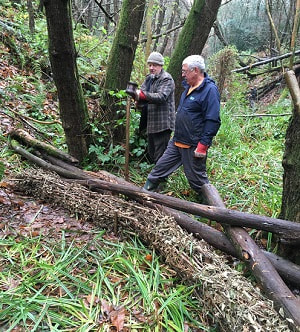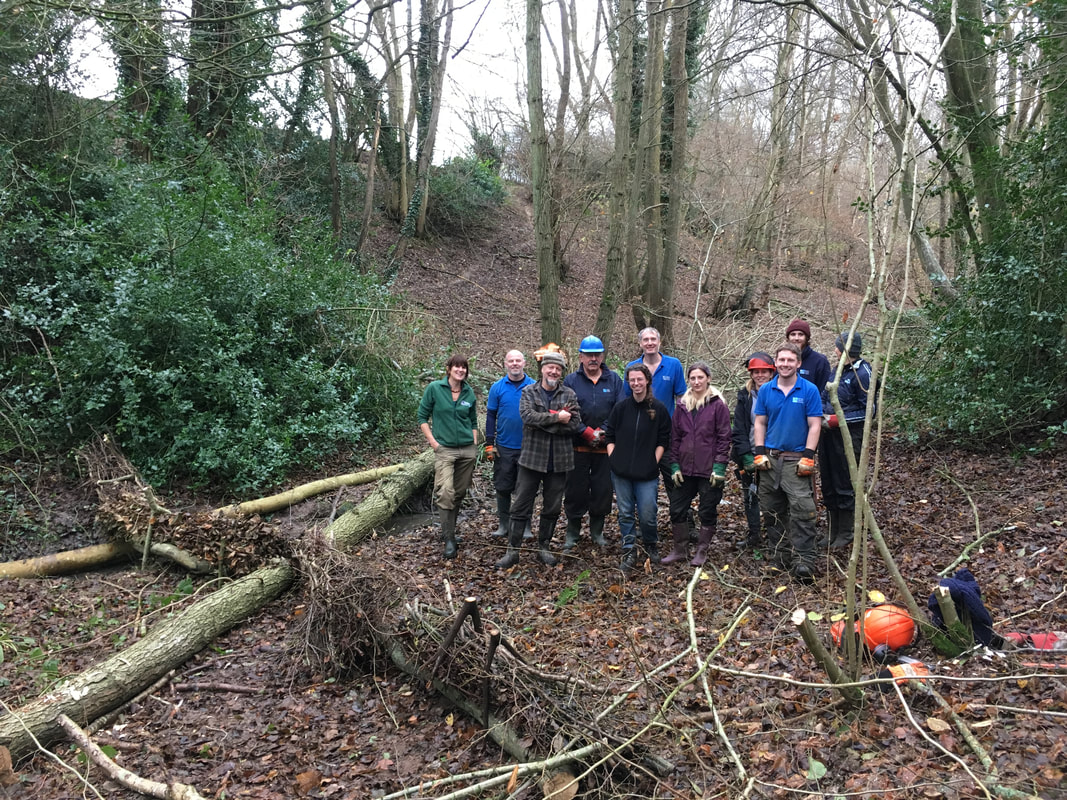 On Thursday 6th December 18 enthusiastic volunteers gathered in Fore Wood to start work on Natural Flood Management (NFM) as part of the Sussex Flow Initiative (SFI) project in the Powdermill Catchment. This semi‐natural ancient, 52-acre woodland has a SSSI designation and falls within the Area of Outstanding Natural Beauty of the High Weald. The site is situated on the edge of Crowhurst village, 1.5 miles south of Battle and is owned and managed by RSPB. The Powdermill catchment is naturally steep and fast flowing. Localized flooding to properties in Crowhurst has occurred regularly in recent years. During times of high rainfall, too much water flows down the river too quickly, and creates flood surges which cause risks to people and property. SFI is working in this catchment to slow down this flow of water. Fore Wood’s steep ghyll woodland streams and sandstone ravines, where rare ferns and bryophytes grow, offer a great opportunity to create natural leaky dams that slow the flow of water to hold it back in times of high flood. This also helps improve the local hydrology to create a wetter woodland, and mimics the natural process of wood falling into the ghyll. By creating these woody features, we aim to slow the flow of water through the ghylls, diverting flood flow paths into minor washland flood plains. This increases the humidity and enhances the unique ghyll flora of the streams and biodiversity of the woodland. We are very grateful to SFI and RSPB staff, interns and volunteers who worked throughout the day to construct over 20 woody debris features in the steep ghyll streams, and we will visit again on the 7th February 2019 to install another 25 natural leaky dam features. The dams are made to look as natural as possible and include using techniques such as whole tree head felling, gulley stuffing and ditch top diverters. These impermanent woody features are designed to be active only in times of heavy rain or peak flow, but we hope they will significantly help to reducing flood peaks in Crowhurst village. If you would like to get involved as a volunteer for the SFI or have any questions about our work in this catchment please email Rina Quinlan, Project Officer, Powdermill Catchment [email protected].
1 Comment
|

 RSS Feed
RSS Feed
